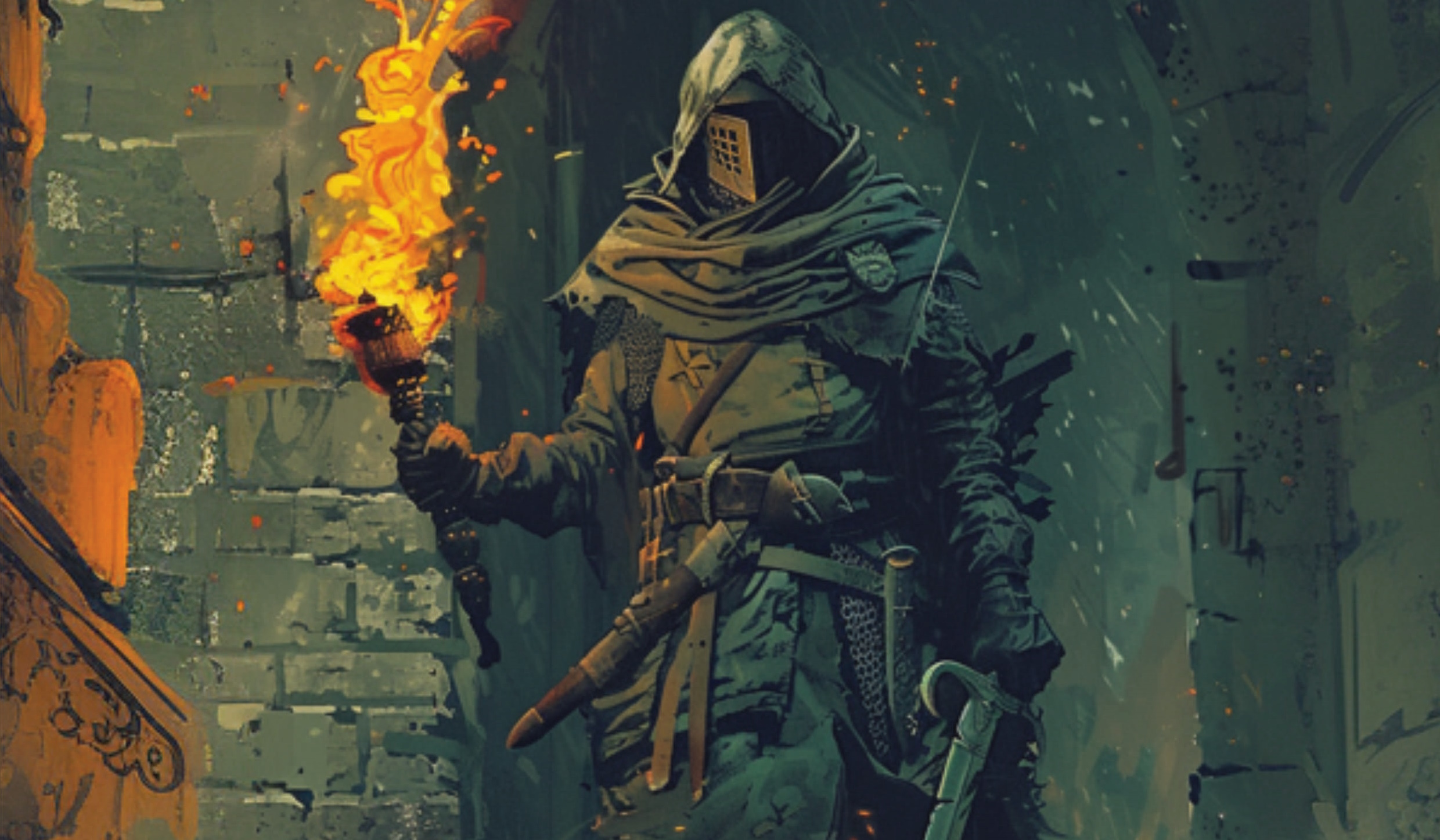Interview with Jeremy Keller
 Recently I have been posting a lot about Technoir, the upcoming cyberpunk RPG by Jeremy Keller. This game has impressed me tremendously and actually made me sign up for Kickstarter, so I could help Jeremy fund this project.
Recently I have been posting a lot about Technoir, the upcoming cyberpunk RPG by Jeremy Keller. This game has impressed me tremendously and actually made me sign up for Kickstarter, so I could help Jeremy fund this project.
By the way, the Technoir Kickstarter project has almost reached it’s current $10,000 goal. Check out this page to find out what it’s all about! (Editor’s note: The $10,000 goal has been reached while this post was waiting to be published.)
A few days ago I asked Jeremy if he was willing to answer a few question for us and he agreed. So without further ado, enjoy the Q&A!
Stargazer: Thanks again for taking your time to answer a few questions for us. Could we start with some introductions? Please tell our readers a bit about yourself. How did you get into roleplaying games in the first place and what made you design your own games?
Jeremy: Hi, everyone. I’m Jeremy Keller. I work in the video industry making graphics and animations. Every chance I get I work on designing games or coming up with ideas for a novel I haven’t written yet. I have to do a lot of that while I go running or do the dishes or drive to work, otherwise I wouldn’t have time for everything.
I started playing roleplaying games in high school. Some friends brought AD&D over to my house one day, we played, and I haven’t been the same since. But I actually didn’t get to play much in high school or in college. We made lots of characters for lots of different systems, but none of us ever wanted to be the GM—we only wanted to play. After college I started running Shadowrun for a group of friends. And since then I always want to be the GM. Though I know so many people who are amazing at running games so now I get to play a lot too.
For any hobby I get into, I want to learn how to create that thing myself. When I first got into comic books, I wrote and drew my own comic book. When I studied theater in college, I directed my own play. When I studied film, I wrote four feature length screenplays and made two short films. When I got into animated movies, I taught myself how to model, texture, and animate.
But for RPGs, there’s already a built-in outlet to create. As a player, you create your character and help to shape the story. As a GM you create a world and create challenges for your player. So it took a lot longer for me to feel the need to create my own RPG after I got into the hobby. But it was inevitable, so it happened. I wrote a fantasy game for my friends and I to play. A lot of concepts from that game ended up forming the basis for Chronica Feudalis.
Stargazer: I happened to notice that your company is called Cellar Games. Cellar in German is Keller. Is this a coincidence?
Jeremy: That’s totally on purpose. The company name’s meaning is three-fold. First, it’s the English translation of my name. Second, the narrator of Chronica Feudalis is an anonymous cellarer. And third, we played (or tried to play) these games in basements a lot growing up so there is the cellar/basement connection.
Stargazer: I think most of our readers are interested to learn more about Technoir, your upcoming cyberpunk RPG. You recently started a Kickstarter project that reached its goal in about 12 hours. Have you ever even hoped for such an amazing success?
Jeremy: I was absolutely floored. I was expecting to watch the numbers slowly creep up when I launched the Kickstarter and was hoping I would make my goal by 30 days. Suddenly I got all these notification emails and every time I hit refresh on the Kickstarter page, the number was bigger. It was a pretty cool sensation. People are saying they want the game I’m making before I’m even finished with it. I won’t lie; it’s a nice feeling.
Stargazer: Kickstarter is becoming the next big thing when it comes to funding indie RPG projects. Have you used Kickstarter before and do you plan to use it for future projects as well? And do you think Kickstarter (and similar services) may change the RPG industry as we know it?
Jeremy: I hadn’t used Kickstarter before; this was my first time. I don’t think I could have used it in the past. No one knew who I was when I wrote Chronica Feudalis. I didn’t have the social network in place to get the word out. Since I’ve had some success with Chronica and I’ve met a lot of other wonderful people in this hobby who like to share information with each other, it ended up being the perfect opportunity for Technoir.
As for changing the industry, there are a lot of opinions on this. I think it’s (relatively) new and novel and so there are a lot of people coming to it for that. It’s a new way to support the creators you like and be a part of making their projects successful. Over time, that novelty is going to wear off. Furthermore, some people might abuse it and scare people off. But overall, I think it’s a solid model. I think there’s a point where its popularity levels out and it’s one more tool our industry has to inform each other about new games, become part of making them happen, and pre-order a game they’re looking forward to (and maybe get some extra swag at the same time).
Stargazer: Let’s get back to Technoir. Can you give us a short introduction into Technoir? What sets it apart from other games and what kind of players do you think will enjoy it?
Jeremy: Technoir is game for playing tough, hard, determined characters in a high-tech future. It’s hardboiled crime novels meets cyberpunk. It has relatively light mechanics where you have verbs (your abilities), adjectives (your focuses), and objects (your gear and cybernetics) and they give you a pool of d6 dice to roll. If you’re successful you get to inflict adjectives onto other characters. So it creates this almost brutal atmosphere where characters are constantly beating up on each other handing out adjectives like “bruised” or “dishonored” or “glitching.”
It’s good for players who like a light framework system that lets them narrate cool actions and come up with their own consequences for those actions.
Stargazer: What sources did you use as inspiration for both the rules and the setting of Technoir?
Jeremy: There was a lot of inspiration for Technoir. Thematically, I went to the novels of Dashiell Hammett, William Gibson, and Neal Stephenson. Rules-wise, there are ideas that I pulled out of Dan Bayn’s Wushu, John Harper’s Lady Blackbird, and Shadowrun of course. Plus there are several ideas that evolved out of Chronica Feudalis and FATE. Then there are the transmissions which are probably most directly attributed to Fiasco’s playsets, In a Wicked Age’s oracles, and Smallville’s relationship map.
But more than anything, this game was inspired by my friends. Mark DiPasquale, who is writing one of the transmissions that will appear in the book, got me really psyched about the cyberpunk genre again after a hiatus away from it. And if you look at the playtesting credits in the game, you’ll see a whole list of people I’ve had long conversations with that have helped me to construct and focus the game in one way or another.
Stargazer: One interesting concept in Technoir is the plot map. Can you please elaborate how the plot map is supposed to work and how you came up with that idea?
Jeremy: So, I mentioned transmissions. These are booklets you can download. Each transmission has 36 plot nodes that describe particular characters, events, locations, factions, and objects in a city. You randomly roll up these plot nodes and arrange them on a map to create content that you challenge your players with. You start with three of them and then as the protagonists go to their contacts for information, more of these nodes are put on the map and introduced to the emerging story.
I got the idea after one playtest session in which the players made a group of cool characters but I had a hard time thinking of what to challenge them with. I had prepared some bad guys for them to fight, but I wasn’t sure what the story was. I wanted a tool to help me come up with something on the spot. At the same time, Ryan Macklin was asking me how I was going to handle setting material in the book and I wasn’t really sure how. So I built transmissions and the plot maps as the answer both those issues.
Stargazer: When I first got my hands on the Technoir beta rules I read them in one session. I was immediately intrigued by the simple yet elegant and deep rules system. Do you plan to use the system for other games as well? I could easily see a fantasy game powered by those rules. Or do you even to make the rules available under a free license, so that other may remix and share games powered by Technoir’s core rules?
Jeremy: I haven’t thought about other games that could use this system yet, I’m still too focused on trying to get this one out the door. But my plan is to release the player’s guide—which is a short, 16 page summary of the rules—as well as the transmissions under some sort of Creative Commons license. I haven’t hammered out all the details yet, but this will allow anyone to make and share their own player’s guides and transmissions that can be used to hack the game in many different genres.
Stargazer: For the $10,000 Kickstarter goal you have thrown in a copy of “Mechnoir” for all backers. What is Mechnoir and will it be available regularly after the Kickstarter project is over?
Jeremy: Mechnoir is one of these player’s guide hacks I’m talking about. It’s just extra content that allow you to play the pilots of big, stompy mechs and dropships, but still using the same rules as Technoir. I’m only making it available to the Kickstarter backers—anyone who backs for $10 or more—but there will probably be some ways to get it after that since it’s Creative Commons.
Stargazer: When will we finally be able to hold our copies of Technoir in our hands? And will the softcover book be available for an extended period of time or will this be a one-time offer? Is there anything else you want to share with our readers?
Jeremy: I am planning of having the books ready to ship in early August. There’s always the chance that there could be printing or logistical delays that set things back a bit, but everything is still on target right now. If I am able to get them in time, the book will be at Gen Con Indy and should be generally available online and through retailers that carry indie games soon after that.
My last thing to share: everyone should be sure to check out the video on the Kickstarter page. I had a lot of fun making it so I hope you enjoy it.
Stargazer: Thanks for answering those questions, Jeremy! And good luck with Technoir and any future projects!



5 comments